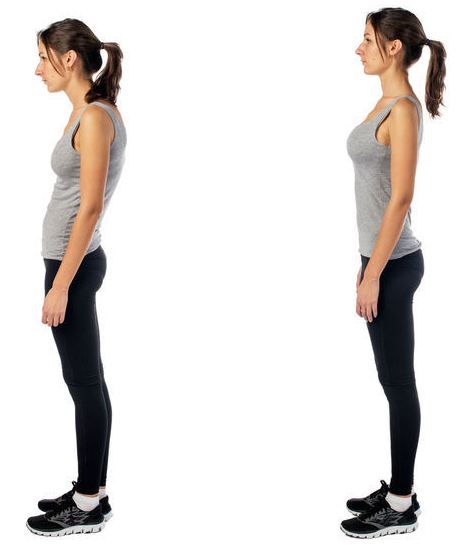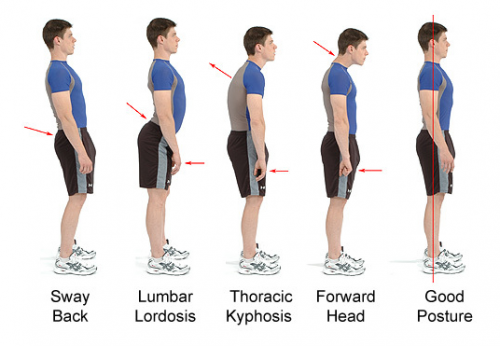Modern Life
The impact of modern life on our bodies, and in particular our biomechanics (the way in which we move and the structure of our muscles and joints), plays a major part in the prevalence of people suffering with lower back pain or weakness. We spend a lot of time sitting down; at a computer, at work or driving. Then come home to spend more time sitting down often in front of the TV or tablet.
Our bodies are designed to move, to keep our muscles and joints (ligaments and tendons) strong and flexible. This also helps maintain our bone density. All these factors link into our posture, which is the key to maintaining lower back (or along the whole spine) strength, and maintaining a pain free life (or reduced pain life).
We aren’t designed to sit for long periods; whilst sitting our muscles are not doing anything as it’s the chair that’s supporting us. This lack of activity causes muscles to weaken and become tight, leading to postural problems and other health concerns; from headaches and numbness to shoulder, neck, hip or knee pain amongst others.
When sitting, our spine compresses and our backs are actually put under more pressure than if we were stood. The discs within our spine, which act as a spongy shock absorber will degenerate and not protect our bodies as they should. Eventually poor posture can develop. This can result in hunching over, arching our backs, and shoulders rounded forwards, and all of these put our muscles and joints in positions which aren’t natural.
Key tips on improving posture whilst sitting are
- sit up with your back straight with your bum touching the back of the chair. (Ideally with a lumbar support back rest)
- hold you head high without stretching forwards
- your shoulders be relaxed down and back
- avoid crossing your legs
- get up for a couple of minutes every 30mins for a walk around
When it comes to standing and moving, it is very easy to tell who has good posture and who hasn’t. The difference to sitting is that there is additional impact placed upon the body every step you take. When we move with poor posture with muscles and joints that are not in alignment, or are a weak and tight. A huge amount of stress is put upon the body often resulting in injury and pain.
Over time, movement or standing with poor posture, will likely lead to injuries on one side of the body as well as your back. Many of us constantly carry a bag on one shoulder and when this is heavy this will inevitably make you lean one way, affecting your hips, shoulders and neck in particular. A simple improvement would be to swop the shoulder you carry your bag over, or have a bag which fits over both shoulders equally. Test yourself and check in a mirror to see if one shoulder is lower than the other. This will correct your symmetry.
Look at the pictures below; with examples of poor and good posture for the obvious differences!

Picture: courtesy of Sports Therapy & Sports Medicine Institute

Picture courtesy; https://bhls.wordpress.com/2011/06/15/how-to-improve-posture-posture-exercises-to-correct-bad-posture
Poor posture will result in extra pressure onto the lower back. Also neck pain due to be stretched forwards (and likely tension headaches), shoulder pain, hips pain, and knee pain. By slouching (either when sitting, standing or moving) you are likely to look and feel sluggish, uninterested, low on confidence and even overweight.
By improving posture you are likely to look and feel more energetic, alert, taller, more confident and also leaner. Poor posture will also lead to a negative impact on your breathing and digestive system. This is due to the compression caused by bending forwards.By simply improving your posture can open up your diaphragm and allow you to breathe better, as well as aid digestion.
An easy way of correcting posture is to imagine a piece of string is being pulled tight through the top of your head from the bottom of your back. This will result in your spine lengthening, your neck moving back and your head lifted. It may feel strange at first, as though your balance feels wrong, but it is because your body is so used to being out of alignment that you need to train yourself to feel correct posture.
The key tips to remember are
- stand or walk as tall as you can and have your weight centred on the balls of your feet
- relax your shoulders and bring back to a neutral position (so that your hands settle to the sides of your legs rather than towards the front)
- the top of your head should be pointed directly up. You will then naturally look straight ahead and keep your chin up
- engage (tighten) your core (abs) by pulling your belly button in towards your spine
- your hips should be neutral and naturally facing directly forwards which will engage (tighten) your glutes
- your knees should be slightly soft and not locked out
- an imaginary straight line should pass from your ankle bone up through your hip, knee, shoulder and ear lobe out through the top of your head
So, keep your chin up and walk tall. You can move towards preventing or relieving back pain weakness and pain.
Coming soon in part 2 of this blog we’ll look at specific ways of improving the condition of muscles and joints which are crucial to back pain, and how they can be trained in the gym. In the meantime, try and make a habit of correcting your posture and develop something that becomes your new normal!
Chris, Fitness Coordinator, Bramcote Leisure Centre



